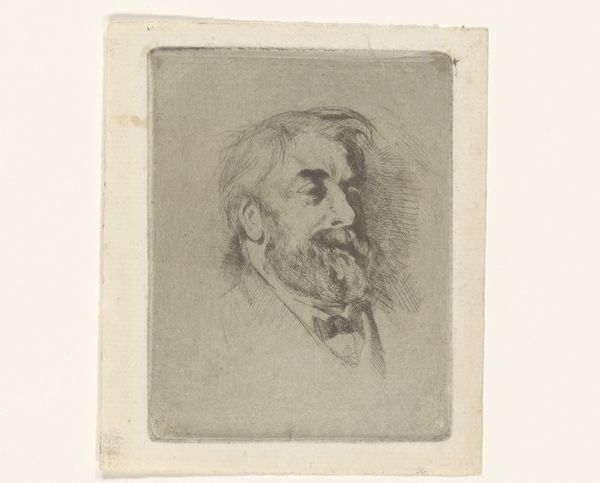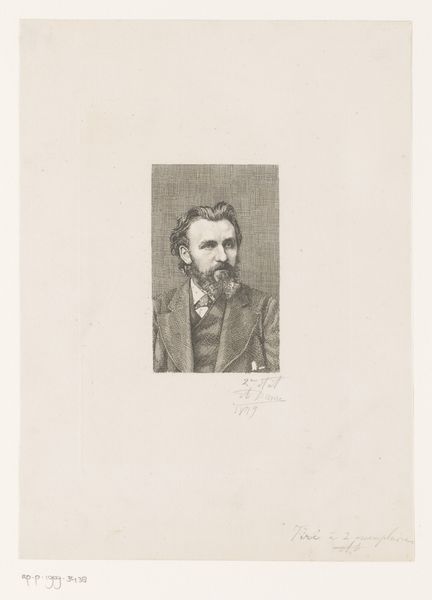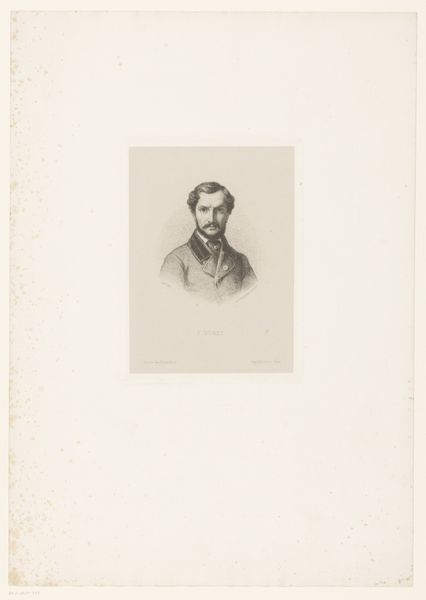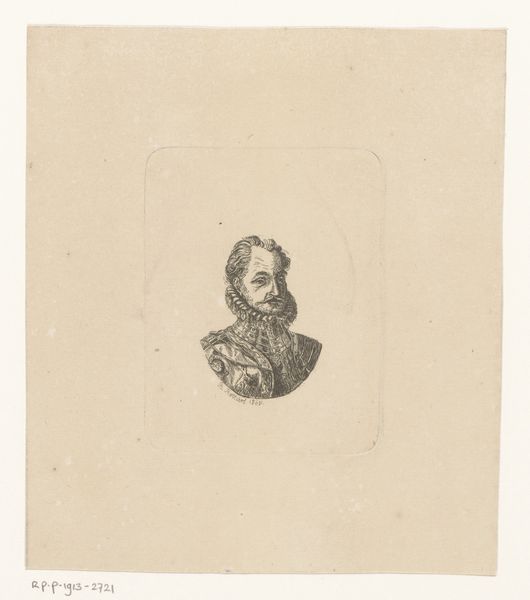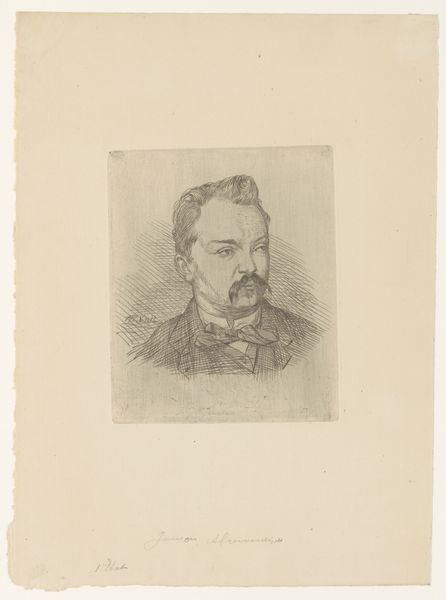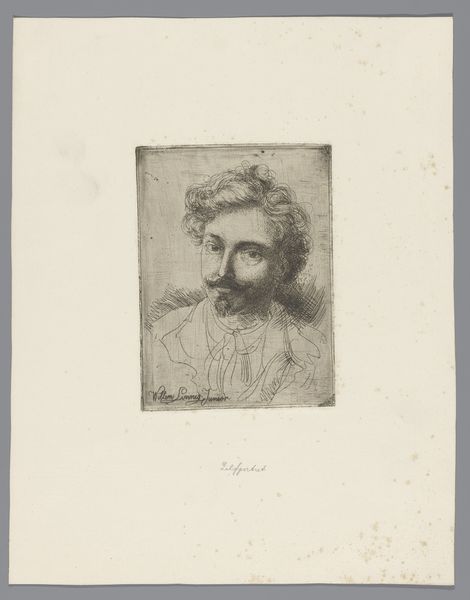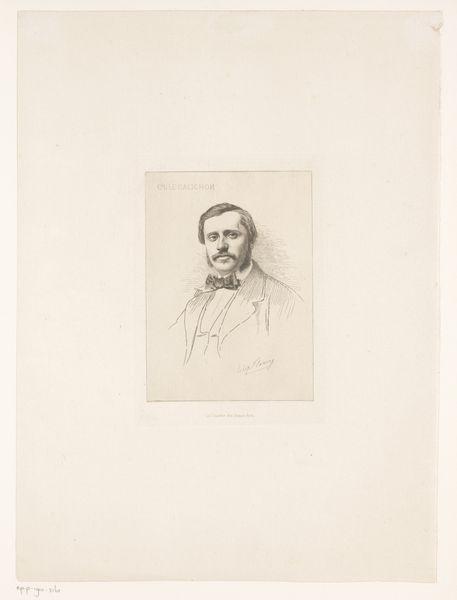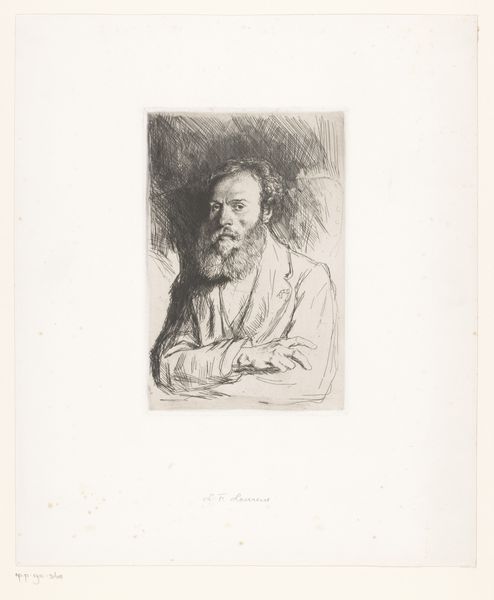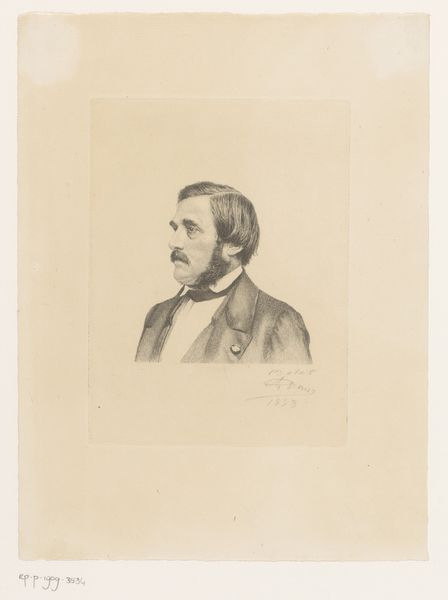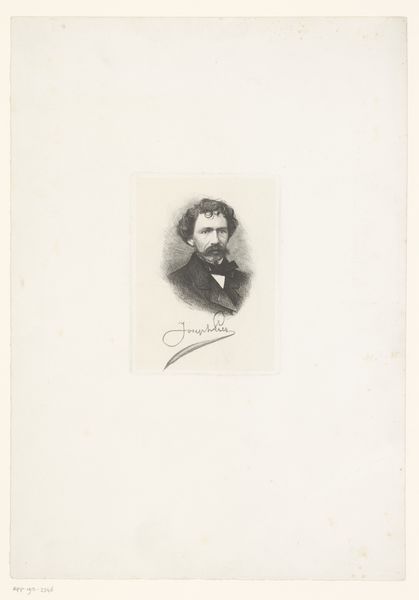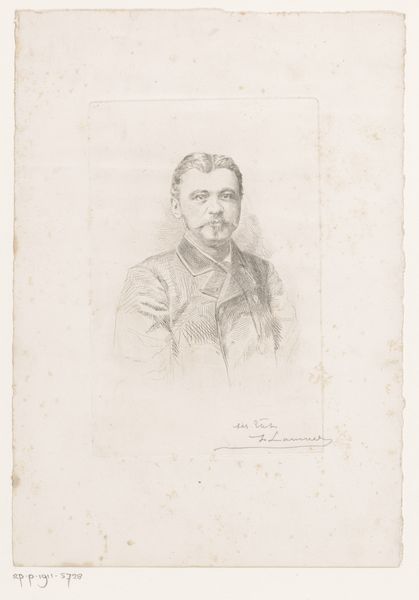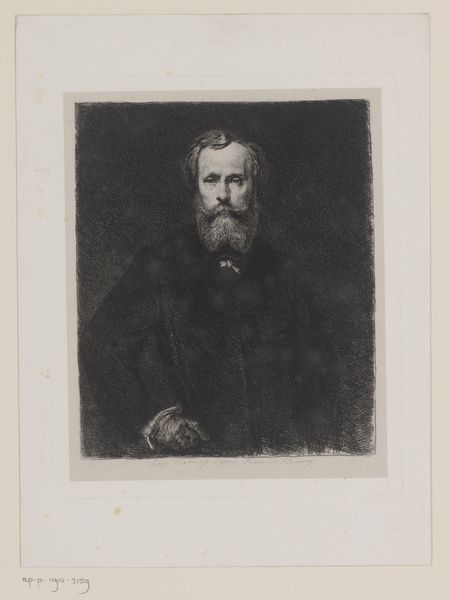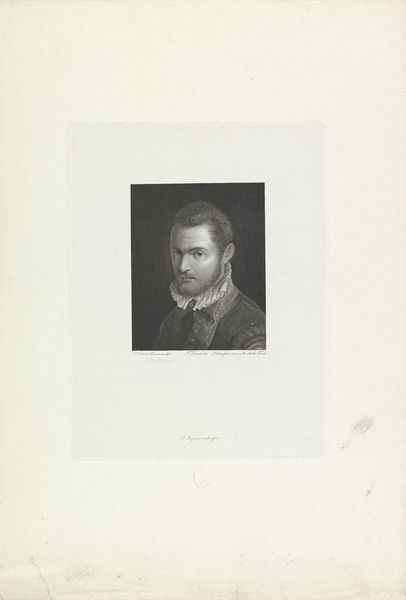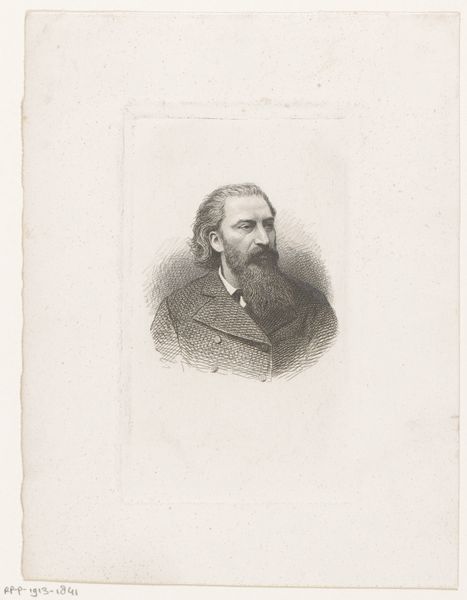
Dimensions: height 141 mm, width 106 mm
Copyright: Rijks Museum: Open Domain
Curator: Let’s take a moment with this 1854 etching by Edmond Lambrichs, a portrait of Charles De Groux. Editor: There’s something immediately melancholy about this. The somber tones and the man’s slightly downcast gaze certainly create that effect. Curator: The etching process itself contributes to that mood, don't you think? The fine lines create a sense of depth and texture but also imbue the image with a certain fragility. Notice how Lambrichs uses cross-hatching to define the planes of De Groux’s face. Editor: Absolutely. And De Groux, who was a painter, seems to embody a romantic ideal of the suffering artist. Think of the rise of Realism in the mid-19th century. De Groux's paintings of working-class life certainly held social commentary that shaped art reception. He was committed to portraying the unvarnished realities of modern life. Curator: Observe the asymmetry present: how the hair is messily placed, contrasting sharply against the clean lines of the waistcoat. It speaks of a raw vulnerability in an era of emerging realist values. His posture indicates discomfort or introspection. The diagonal line of his jacket emphasizes its contrast. Editor: The very act of creating a portrait, of representing someone, can be seen as an attempt to fix or understand them. Considering the social context in which De Groux's artworks gained visibility, Lambrich's study reveals the role of Romantic artists that question reality and representation, with art and artists more self-aware. Curator: It highlights De Groux's human condition through the romantic lens—perhaps an invitation for us, viewers, to consider the layers of emotion beneath a superficial assessment. Editor: Indeed. It encourages a deeper exploration of De Groux's practice, a call to empathize and interpret rather than judge or dismiss, particularly relevant when studying an artist of the 19th century. Curator: Looking at it formally and taking a symbolic lens offers valuable and deep visual engagement with the subject, which echoes an interesting introspection about an artist portraying another artist. Editor: That’s right. I'd hope to be more empathetic regarding that man’s personal burdens that drove him to produce poignant artworks, now, thanks to you.
Comments
No comments
Be the first to comment and join the conversation on the ultimate creative platform.
